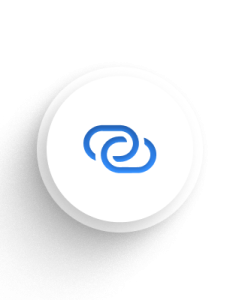Have you ever wanted to effortlessly obtain valuable information from a great amount of data on your computer screen? Explore screen scraping, a powerful tool that turns digital ideas into real insights. This guide shows the secrets of this process, from its basic principles to its practical uses, helping you use the hidden data on your screen.
Understanding Screen Scraping
Screen scraping automates the process of extracting displayed data, eliminating the need for manual human interaction. This significantly speeds up the data collection process, enhancing the overall user experience.
Screen scrapers are programs designed to locate and identify user interface elements. They extract, transform, and provide data to another application. When dealing with displayed data containing images, screen scrapers use Optical Character Recognition (OCR) technology to gather information.
Your computer screen showcases a detailed list of prices, trends, and hidden patterns; screen scraping extracts these details and converts them into usable data. Unlike web scraping, which focuses on textual information, screen scraping goes deeper, reaching into the visual aspects of user interfaces and applications.
How Screen Scraping Works
Screen scraping is a method of collecting data directly from your computer screen. It operates by utilizing a bot that accesses a customer account and autonomously captures on-screen data in the background, all without the customer’s active presence.
Here’s a straightforward explanation of how screen scraping works:
Locating the Data
Imagine the data you need as valuable items hidden on your screen. Screen scrapers use programs to scan the screen and identify where the data is located.
Extracting the Data
Once found, the scraper employs various tools, such as coding techniques, to extract the data.
- Parsing HTML: This involves deciphering the website’s code to locate the data.
- Reading text directly: If the data is plain text, the scraper can copy it.
- Using OCR: When dealing with pictures, the scraper reads the text within them, similar to how you read a sign.
Cleaning and Organizing
Extracted data may be messy initially, like a pile of gems and rocks. The scraper cleans, organizes, and formats it for easy understanding by other programs.
Delivering the Data
Finally, the scraper delivers the cleaned and organized data to its destination, which could be another program on your computer, a database for storage and analysis, or another website or app that requires the information.
Uses of Screen Scraping
Screen scraping is widely used in various fields, from personal tasks to large-scale data analysis. Here are some common applications:
Data Acquisition
- Price Comparison: Collecting prices from online retailers helps users compare and find the best deals.
- Market Research: By scraping relevant websites, businesses can gather data on market trends, competitor activities, and customer behavior.
- Social Media Monitoring: Brands track brand mentions, analyze sentiment, and gather customer insights from social media using scraping tools.
- Web Data Integration: Scraping extracts and integrates website data into other applications or databases, like CRM systems or business intelligence platforms.
Automation and Efficiency
- Data Entry Automation: Scrapers automate filling forms or copying information from websites, saving time and effort.
- Lead Generation: Scraping contact information from websites or online directories helps businesses generate leads for marketing campaigns.
- Inventory Monitoring: Scraping monitors product availability and pricing on websites, optimizing inventory management.
- News Aggregation: Aggregator websites use scraping to collect news articles and other content from various sources.
Research and Analysis
- Academic Research: Researchers use scraping to gather data for academic studies, such as analyzing online trends or public opinion.
- Financial Analysis: Financial institutions use scraping to collect financial data from various sources for market research and risk analysis.
- Sentiment Analysis: Analyzing scraped text data from social media or online reviews provides insights into public sentiment toward a brand, product, or event.
- Web Content Analysis: Scraping is used to analyze website content for SEO purposes or to identify trends in online content.
Remember, ethical and legal considerations are crucial when using screen scraping. Always ensure proper authorization to access data and respect the terms of service of any website you scrape.
Concerns of Screen Scraping
Though screen scraping is allowed by law, using it for sensitive information like banking data raises security concerns. The main problem isn’t the scraping itself but how companies ensure the scraped data is secure. Rules like PSD2 and Open Banking tackle this issue by pushing banks to use secure Application Programming Interface (API) instead of screen scraping.
Key Points
- Screen scraping is legal, but using it for sensitive data can be risky if companies don’t have strong security measures.
- Many third-party banking apps use screen scraping to gather user data, including login credentials and sensitive information. This practice was vulnerable due to weak security in some companies and a lack of user transparency.
- Data breaches and fraud are possible threats if screen scraping companies lack proper data protection or transparency. Rules like PSD2 aim to address this by promoting secure APIs and user data control.
- PSD2 and Open Banking encourage banks to use secure APIs for data sharing, reducing reliance on screen scraping and its inherent security risks.
- While screen scraping alone isn’t inherently insecure, companies must use proper security practices. Regulations play a vital role in ensuring data protection across all industries.
Screen Scraping vs. Web Scraping
Both screen and web scraping are methods for retrieving data, each distinguished by its source and approach.
Web scraping concentrates on data housed within a website’s structural elements, such as HTML code and databases. It employs programming tools and scripts to directly interact with websites, replicating user actions like clicking links to access and extract information, as seen in tasks like gathering product prices, news articles, or social media data.
On the other hand, screen scraping captures data directly from the display, encompassing text, images, and dynamic content, regardless of origin. This method uses software tools to interpret visual elements on the screen, copying human perception to understand information.
Examples of screen scraping include copying text from a PDF document, extracting data from a graphical user interface (GUI), or capturing screenshots of specific sections on a website.
Due to its direct interaction with the data source, web scraping is often regarded as more dependable and efficient than screen scraping. Meanwhile, screen scraping can pose greater challenges, especially when dealing with dynamic content and facing anti-scraping measures websites implement.
Conclusion
Using screen scraping requires responsibility. It’s a powerful tool that can uncover hidden data but comes with ethical and legal considerations, especially when dealing with sensitive information. Moreover, it needs security practices and a commitment to data privacy. Regulations like PSD2 and Open Banking advocate for secure APIs, emphasizing that companies are ultimately responsible for data protection. Screen scraping should be used for positive purposes, providing valuable insights and automation, but always with respect to user privacy and data security.



